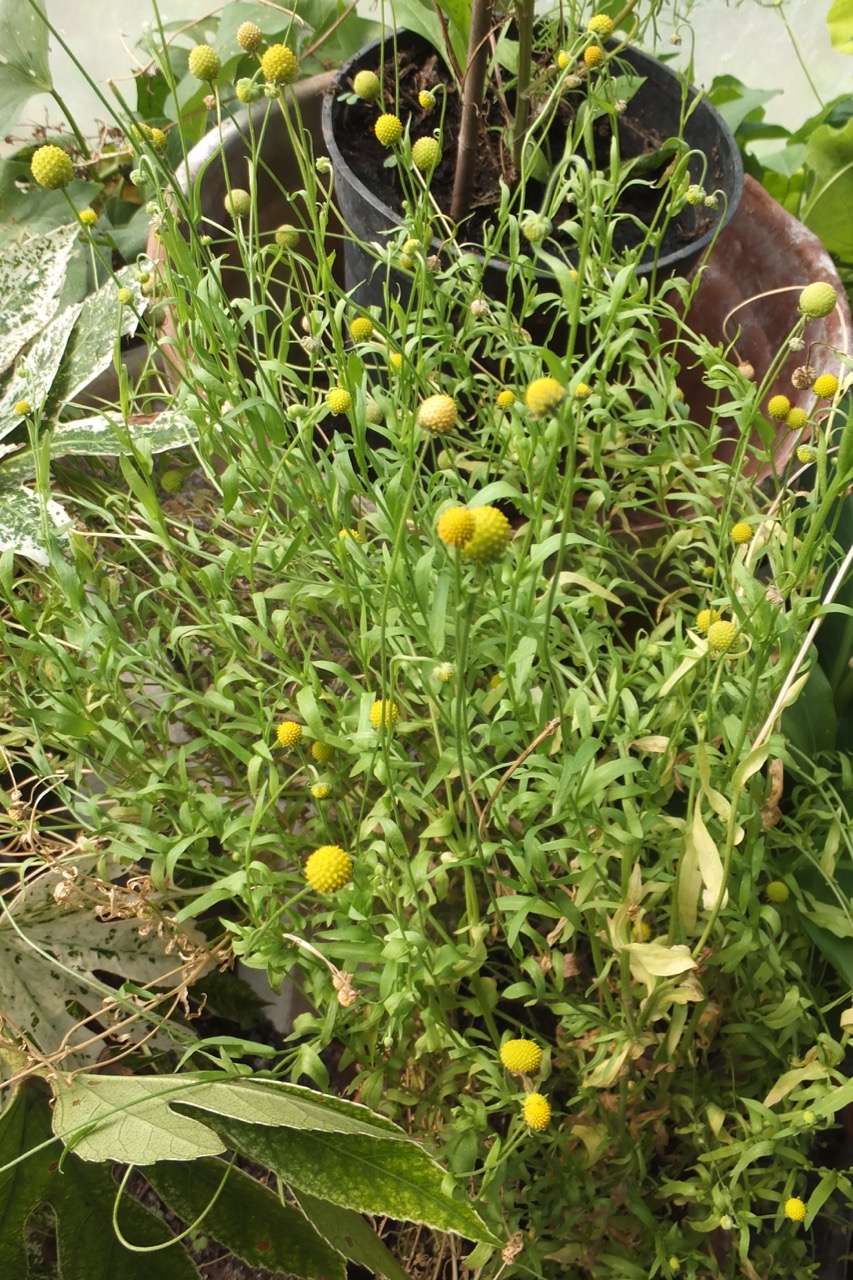
So why on Earth would you want to grow this in your greenhouse? Well, because this is a living ‘pot pourri’. A South American relative of Asters it’s delightful though as the disparaging quote from Paxton’s Botanical Dictionary suggests it’s neither graceful, compact, neat nor colourful.
Thus certainly not a centrepiece, nor a background foliage plant but one you must sneak in between others. Particularly position some by the doorway or next to a bench where you can idly detach and rub the small globular yellow flower heads. You delicately sniff these, their aroma is so deliciously fruity; pineapple, pear, mango, apple, all together, similar yet different, you cannot resist sniffing another, and another.
It’s said “there’s no pleasure that’s not illegal, immoral or fattening” however enjoying beautiful scent is an exception. One that you can repeat each time you pass by throughout the summer. And, because it’s a half hardy annual, pots of Cephalaphora can be moved outdoors for summer so you can also enjoy imbibing this on your patio. Perhaps next to a Lavender plant so you can switch between their perfumes enhancing both.

As Paxton almost grudgingly admits this is “of easy culture” and is as straight forward as most half hardy annuals. Sow in warmth in spring, potting on to mature in the border, or better in pots which can be conveniently moved about. It reaches a foot across by a couple or so tall, less if trimmed.
This dies away in autumn, lasting a tad longer if regularly cut back although this is not otherwise necessary. As it does tend to an ungainly straggly nature it will benefit from tying around a cane, or may be better wedged between a couple of other, perhaps more visually appealing companions.
Cephalaphora aromatica has also been known as Helenium, Graemia, and Hymenopappus yet never a genuine common name, nor are there other species, varieties nor close relatives in cultivation.
(Note – After the plant dies the faded flower heads retain their aroma but be careful as if powder dry these become a snuff that can give some folk a sneezing fit.)


